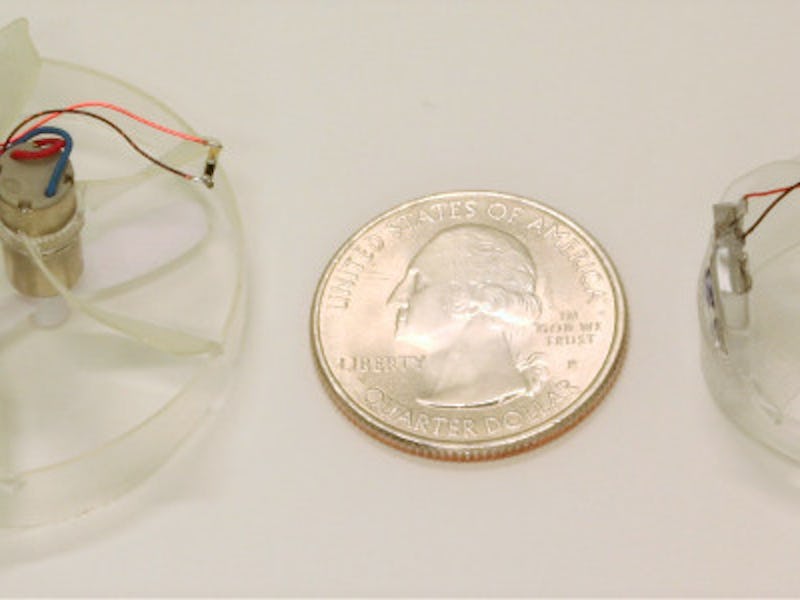Students at the University of Pennsylvania revealed on Friday that they have created what they believe to be the world’s smallest self-powered drone. This flying robot, dubbed Piccolissimo, could be the latest sign of a future dominated by miniature gadgets buzzing around our heads.
Piccolissimo — Italian for “tiniest” — is actually the name of two devices. The first consists of little more than a propeller, a power source, and an infrared receiver that tells it how fast to spin; the whole thing is about the size of a quarter. The other version has some extra parts that allow it to maneuver, and it’s about a centimeter wider than its little brother.
Both versions of the tiny drone were made by taking the propeller off a toy quadcopter, 3D-printing a body, then adding the components needed to fly. The students expect to be able to create even smaller versions of Piccolissimo as the toy drones from which its parts are scavenged continue to shrink themselves.
This is just the latest attempt to shrink robots. Others include a soft robot “caterpillar” and the pocket-sized drones Amazon received a patent for in October. (Admittedly, those drones are on the larger end of the scale.)
While the size of these robots limits their utility, they can also do more than people might expect. The robot caterpillar is capable of carrying small objects, and Amazon’s drones would feature A.I. that allows them to find objects, navigate obstacles, and follow voice commands. It’s not the size of the robot so much as it’s the cleverness of its applications.
Piccolissimo can carry about 1 gram worth of equipment. That’s not a lot, but its creators said that’s “more than enough to carry a camera or other atmospherics sensors” that can be used to create a “360 degree panorama” as the drone spins. This could be used to scan barcodes, collect weather data, or gather other information from the environment.
Eventually those capabilities might be augmented with wireless charging, which is currently being used by an experimental drone made by researchers at Imperial College London, to continuously hover while it collects data for whoever operates it.
Inverse reached out to the University of Pennsylvania to learn more about Piccolissimo’s future and will update this post if we hear back.
